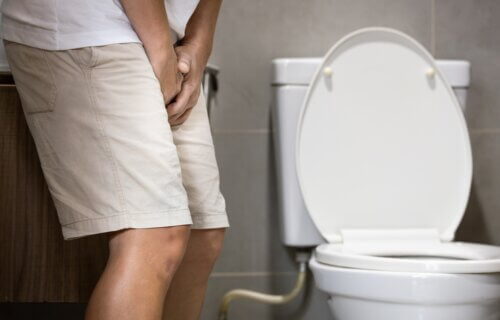PARIS — When you gotta go, you gotta go. But when you feel like you gotta go all the time, it can be painful both physically and mentally. Lower urinary tract symptoms such as frequent urination, hesitancy, straining, and difficulty emptying the bladder entirely are quite common in men as they grow older. Now, interesting new research suggests a combination of pelvic floor exercises and behavioral therapy facilitated by an app may prove more effective than current medical treatments when it comes to treating men with frequent urges to urinate.
The findings of this study, called the Bladder Emptying Disorder Therapy (BEST) Trial, suggest that an app-based therapy may lead to significant improvements in the lower urinary tract symptoms experienced by millions of men. The full results of the trial are set for publication later this year.
Conducted in Germany, this project was the first-ever randomized controlled trial focusing on the combination of pelvic floor training, behavioral therapy, and bladder control techniques for mild, moderate and severe bladder emptying disorders among men. All of those interventions came as app-based therapeutics.
Bladder emptying disorders can start to appear as early as age 30, and affect a large proportion of men aged over 50. Current clinical guidelines recommend physiotherapy, behavioral therapy, and lifestyle changes as a first-line of treatment, but these suggestions are frequently ignored by doctors due to a lack of available evidence. Meanwhile, the few drugs currently available show an association with numerous unpleasant side effects. Surgery is only advised for those with severe symptoms.
“Frequent urges to urinate and issues emptying the bladder are the most prevalent urinary conditions we see in men after urinary tract infections. While some drugs are available, they don’t tend to be effective, and up until now there’s been little data available to back physiotherapy. We’re confident that we now have that data, and making this form of therapy available digitally could be a game changer for the millions of men who struggle day-to-day with issues emptying their bladder,” says Professor Christian Gratzke, from University Hospital Freiburg in Germany, who co-led the trial, in a media release.
Study authors recruited 237 men over the age of 18 from all over Germany to take part in the three-month study. Half of those men randomly received standard medical care, while the other half gained access to the Kranus Lutera app-based therapy in addition to standard care. All participants had to record a urination diary, used by researchers to inform their treatment and fill out various questionnaires regarding the severity of their symptoms and overall quality of life.
After 12 weeks passed, researchers noted significant and clinically meaningful improvements in symptoms and quality of life measures among those given the app-based therapy. This cohort reported an average seven-point increase in symptom scores in comparison to the control group.
Importantly, researchers found that the app-based therapy appears to be more effective than medical therapy. No patients reported any side-effects, or challenges accessing the smartphone app, either.
‘Very Positive Effect Over Conventional Drug Treatment’
All in all, this work challenges the dogma of the 1980s and 1990s, when prostate surgery was the first line of treatment for an overactive bladder, and offers a welcome alternative to drugs, study authors posit.
“There has been little to no evidence to support training men to better control their bladders, despite this being recommended in clinical guidelines. This is the first randomized controlled trial looking at physiotherapy and behavioral therapy for bladder emptying disorders, and it shows a very positive effect over conventional drug treatment,” comments Jean-Nicolas Cornu, Professor of Urology at the Charles Nicolle Hospital in France and member of the EAU Scientific Congress Office. “We now need a bigger trial looking at the longer-term effect of this app-based therapy after 12 weeks for different forms of bladder emptying disorders. If offered widely, this treatment could dramatically change clinical practice, and could relieve symptoms without exposing patients to drugs. We could save a lot of unnecessary prescriptions for drugs that tend to be of little benefit.”
Study authors compared data from men whose symptoms were due to an overactive bladder with those whose symptoms were due to an enlarged prostate. This led to the finding that both groups benefit from therapy. But, researchers did not compare the effect of therapy on different forms of bladder emptying disorder.
“Many men with bladder emptying disorders are aging and have other medical conditions that require drug treatments,” Professor Gratzke explains. “The limited drugs we have available aren’t suitable for these patients due to their side effects. For those with mild-to-moderate urinary symptoms, this digital therapy is without side effects and improves symptoms by a magnitude we have not seen before. Simply strengthening the pelvic floor makes all the difference, it’s a no-brainer.”
